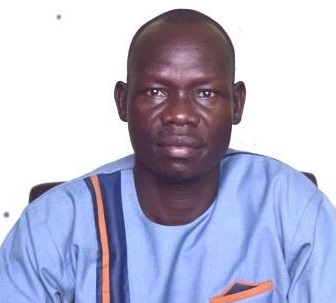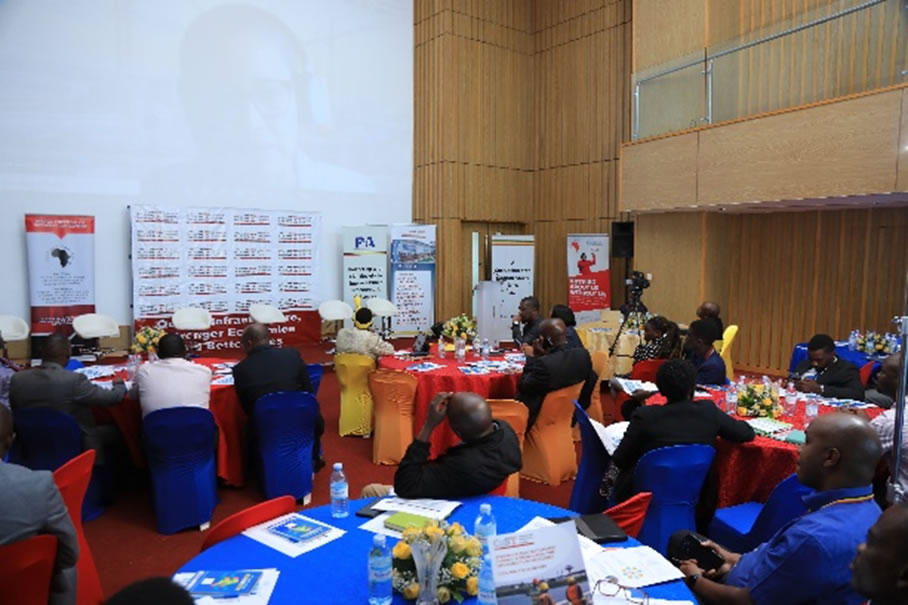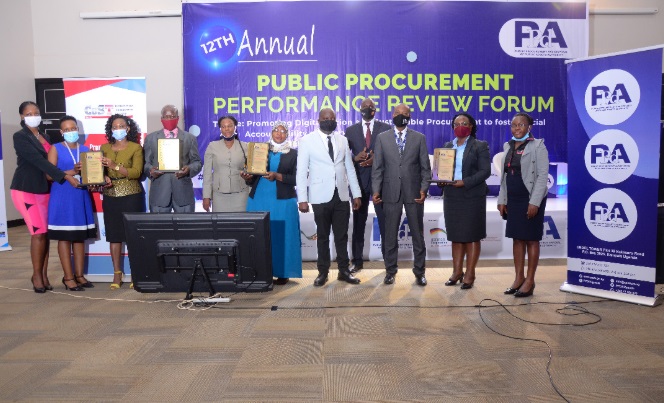The Busoga College, Mwiri is 109 years old, unfortunately, the road to the school had never been upgraded until the Prime Minister and Rt. Hon. Ruhakana Rugunda visited during the celebration of 100 years of the school in 1999 as a former student of the school and implored the President through MoWT to upgrade the access road to the school. The upgrade would also enhance the economic empowerment of the locals. However, important to note in Uganda is that, Presidential pledges have no standby budgets to implement these commitments, responsible entities are required to identify funds through the budgeting process to deliver the pledges /commitments. This is why since 1999, the road could not be worked on.
Following the instruction from the President, the MoWT identified funds years later to upgrade the road; the first phase was contracted however, the contractor was not forthcoming in the implementation of key recommendations, and implementation had a lot of shortcomings as identified in the CoST Uganda’s 2nd Assurance report. These concerns such as the destruction of citizens’ gardens/sources of livelihood, no information wall/project signpost, poor drainage, speed humps/and warnings, road markings had not been addressed by the contractor; Multiplex Limited.
The contractor had been informed formally following the Barraza held on 13th July 2019 with CoST Uganda and he had acknowledged that he would address the concerns by July 2020. Unfortunately, a follow-up meeting on 12th September 2020, revealed that no work had been done.
The MoWT following their internal assessment of the performance of the contractor, confirmed that there was poor performance of works, damages observed, negligence of works, and lack of disclosure on the project had charged the contractor 168M Ugx. One challenge and gap the MoWT had was that the first phase had not been well documented and that, most engagements held could not be accounted for. Stakeholders such as National Water, UMEME- the Electricity Transmission Agency, and the citizens around the project area had not been well involved and engaged in the project. In addition, key findings from the Assurance Process included;
- Some workers did not wear protective gear on site. Contractors are advised to deny entrance to all those who appear at work without their protective gear. This helps to protect the name of the contracting company and also to protect the worker against accidents on site.
- There was no resettlement action plan and citizen engagement on the right of way.
- There was no drainage and waste material disposal and management plan.
- There was no environmental impact assessment conducted on the project even though the ministry noted having environmental briefs which were not disclosed and not reflected upon during construction by the contractor.
- Contractor during the assurance process was advised to have quality and safety officers who have not been employed up to date.
- No project signboards showing project duration, cost, and other relevant information for the public to know.
Despite the disruptions from the contractor’s lack of effective delivery and negligence, the project was well received by the community, and; citizens are pleased to engage with it. They attribute the upcoming economic growth of the community to the infrastructure development around them. The citizens were very informed and had built ownership of the project, key stakeholders that had been left out in the first phase, such as Kakira Town Council, UMEME, and National Water had been engaged and these in turn addressed the concerns the community raised. In addition, the MoWT conducted an ESIA and shared findings with the local citizens. Meanwhile, there was one major challenge lack of an information wall for the project and poor drainage systems; there were two accidents reported on the project and these required speed humps to be rectified; the MoWT committed to putting these in place, where possible. Temporary humps would be erected as construction works were ongoing.
“People have been affected by the construction works, in my Local Council Office, there are reports and complaints that their gardens were destroyed and food crops destroyed to almost half an acre and in some cases, an acre, Mr. Okello is an example of those citizens whose gardens of cassava were destroyed” Christopher, Area Local Council Chairperson during the Baraza of 13th July 2020.
“CoST should continue meeting with the contractors, consultants, and other professional bodies alongside meetings with the citizens” Rogers Asiimwe Jude, Architect and Community member recommended.
“We were not involved in the implementation of the project; we were never invited to any stakeholder’s meetings and were not happy being involved at the finishing lane. However, we promise to cooperate and ensure that the project is successful as it will be maintained and managed by the same town council. The Client should adjust the design of the roads to enable citizen access to their gardens. The project has had time overruns due to the delays by the contractor. In addition, the level of citizen engagement on the project was not effective; this would have catered for offshoots to overcome the storm waters. We need to see the Environmental Impact Assessment to identify gaps to address the concerns from the community” Town Clerk Kakira Town Council during the Baraza of 13th July 2020.
The MoWT expressed a lot of concern about the performance of the contractor which resulted in the use of the Force Account mechanism for the second phase which was at 65% by 12th September 2020. The lessons from the first phase curtailed with the need for citizen engagement, information sharing, and documentation of work enabled the MoWT to plan effectively for the second phase extension which has been implemented steadfastly and with all stakeholders involved. The MoWT attributes this lesson and improvement in performance to the engagements and value the CoST Assurance process has added. Experiences from the CoST Assurance process are also being used in the planning and implementation of other projects within the MoWT.
There was no ESIA done by the MoWT citing a lack of guidelines on how environmental management on small projects. The MoWT in 2019 used the New Environmental Act 2019 which requires that all projects have ESEIAs and following CoST recommendations, they conducted an ESIA, findings and recommendations from the project were discussed in the initial meetings with citizens under the second phase of the project. Some of the issues were included in the contract document. Information in the communities was disseminated in February 2020, “we started engagements with the citizens on environmental matters in February 2020 and we talked about issues of dust and breakage of drainage pipes among others. There is also a contact person on site who is responsible for information sharing” said Mutemo Charles, Environmentalist on the Project, MoWT
We appreciate the new road that has come to my local council, however, there are stormy waters every time it rains, because the drainage is poorly done, this should be worked on. My village did not have a good road, this new road is here to help us. Because of the new road, we no longer have thieves attacking us, as they usually hid in the bad road we had. These community meetings usually supported by CoST Uganda and the Ministry of Works and Transport help us get closer to the people who are constructing the road, the Engineers, know them and ask questions, sometimes we walk along the road to identify what has not been done well and recommend how to improve. We also have an opportunity to express other concerns, nothing is imposed onto our community when we have such Barazas” Zarya Amisi, Chairperson Local Council I.
A follow-up Baraza held on 12th September 2020 and a monitoring visit held on 7th December 2020, revealed that despite the disruptions from the contractor’s lack of effective delivery and negligence, the MoWT had engaged the citizens and other respective stakeholders on the issues raised and as a result, the project was well received by the community and; citizens are pleased to engage with it.
- Out of their negligence, the contractor was charged 160 Million Uganda Shillings. This is partly attributed to the engagements held by CoST Uganda in partnership with the MoWT. CoST Engagements and the Assurance process helped the MoWT identify the gaps the contractor had in project implementation thereby calling for action.
- The citizens attribute the upcoming economic growth of the community to the infrastructure development around them. The citizens were very informed and had built ownership of the project.
- Key stakeholders that had been left out in the first phase, such as Kakira Town Council, UMEME, and National Water had been engaged and these in turn addressed the concerns the community raised.
- In addition, the MoWT conducted an ESIA and shared findings with the local citizens.
- There was one major challenge of the lack of an information wall for the project, the MoWT committed to installing a project sign board.
- An information board for phases one and two had been procured pending installation.
- The Ministry improved the drainage system and open manholes to enable the movement of rainy water to the main channels. Runoff water no longer floods people’s gardens, and homes; some citizens had complained of not sleeping whenever it rained as the drainage system had been directed to people’s homes. The MoWT further secured culverts to install securing at least five homes, and Kakira had been asked to secure culverts for at least 10 homes.
- There were five accidents reported on the project and these required speed humps to be rectified; the MoWT erected temporary speed humps and would install permanent humps following the completion of the tarmac rollout. Speed humps help manage drivers’ speed while on the road.
- The MoWT had strengthened supervision of works and had a Site Fore Man full-time on the project.
- The Ministry of Works and Transport had graded the Weiraka Modern School road and compacted it with murram. There was an added cost to the project budget but was justifiable as the citizens needed it more urgently. The Mwiri Primary school walkways – access roads were tarmacked as part of the road works on the Busoga Mwiri Access road, this additional cost was also justifiable.
“Temporary humps have helped reduce accidents, citizens are thanking MoWT for the humps because trucks, cars, and motorcycles are no longer speedy, and there is also no more dust, and noise pollution, following the installation of the first layer of tarmac” Site Fore Man.
As we continue engaging for better and sustainable infrastructure development, we will be engaging the Ministry of Works and Transport on some issues observed on the project works such as engaging the contractor – Multiplex Company to complete pending works on the first phase, we also encouraged the MoWT to strengthen project monitoring and institutionalize citizen engagement in other projects learning from this experience, enhance information sharing across all projects within the Ministry and across its agencies. Private sector Associations such as UNABEC were called on to engage with contractors to deliver quality and timely infrastructure, poor performance affects the reputation of local firms in the long run. The Ministry will also be engaged to establish huge speed humps close to Mwiri Primary School, the village of Hope, a river of hope school, and old Kakira Road, installation of educative materials around the project, and create awareness with citizens on the protection of project signage materials, maintenance of the temporary speed humps.



